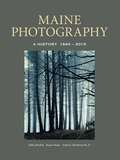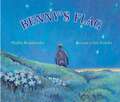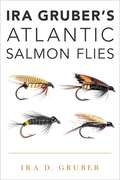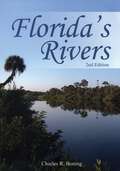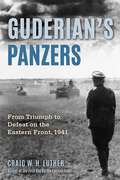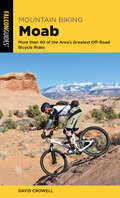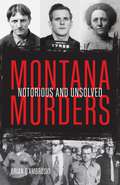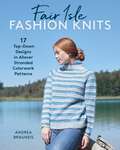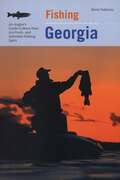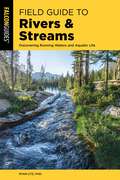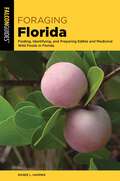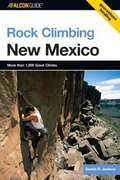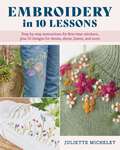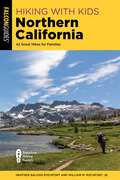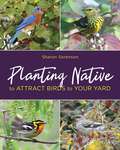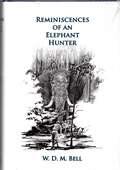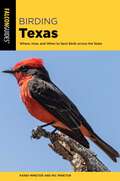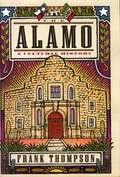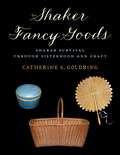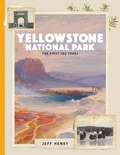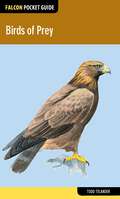- Table View
- List View
Sunrise: A Photographic Journey of Comfort, Healing, and Inspiration
by Mark Potter&“With a moonless sky this early morning, it is eerily dark out here, and I can feel the weight of the hot and humid South Florida air. As I head toward the sound of the rolling ocean surf ahead of me, the soft beach sand shifts beneath my feet, making it hard for me to walk while balancing my two cameras and a heavy tripod. Even though I go out like this virtually every morning, it never gets old, and once again I am starting to get excited. I can even feel my breathing increase as I approach the shoreline. These are all welcome signs that I&’m fully alive right now and am engaged in what I call &“magic time.&” It&’s that ungodly hour of the day when most normal people are still safely at home, asleep in their comfortable beds––blissfully unaware that they are on the verge of missing out on one of the best lightshows on all of planet earth: The tropical sunrise!&” ––Mark PotterIt is the unvarnished truth that all of Mark Potter&’s bright and colorful sunrise photographs began from tragedy and grief, and were taken in memory of his wife who died from cancer. But as miracles sometimes have it, the images turned out to be the exact opposite of the way they began. They are upbeat and exciting, but also comforting and calming while capturing the natural world of Florida as it awakens to each new day with not only sunrises, but also seascapes, wildlife, marine life, flora, and fauna.
Maine Photography: A History, 1840-2015
by Earle G. Shettleworth Jr. Libby Bischof Susan DanlyMaine has always played a rich and varied role in the art of photography. For hundreds of years, photographers, like other artists, have made their way to Maine to capture the natural beauty and human culture of the state. So, too, have many photographers come from Maine, and many contributions by Mainers have been made to the medium. Maine in Photography is the first comprehensive overview of the history of photography in the state. Providing basic knowledge of the most important people and institutions to have promoted photography, this volume also studies the ways in which photography has informed the understanding of the social and cultural history of Maine. Beginning with the earliest daguerreotype portraits of the 1840s, this history traces the growth of the medium—emphasizing key contributions, such as the Stanley brothers&’ invention of the dry plate process—through to the present. Key topics addressed throughout the book include the importance of photography in documenting labor and economic life, the close relationship between photography and the growth of tourism, and the role of Maine photographers in advancing the medium as a fine art form. Published in conjunction with the Maine Photo Project, this is a unique and timely addition to the body of work on the importance of Maine to American art.
Benny's Flag
by Phyllis KrasilovskyBenny was an Aleut Indian boy living in an Alaskan mission home many years before Alaska became a state. One day his teacher told the class about a contest to make a flag for Alaska. That night the boys and girls of the mission house made many designs for the flag. Benny thought about what he loved most about Alaska. Benny knew what he wanted his flag to be like: the blue field for the Alaska sky and the forget-me-not flower; the North Star for the future State of Alaska, the most northerly state in the Union; and the dipper for the Great Bear—symbolizing strength. A month later the teacher announced: "Children, the flag contest is over. From all over Alaska children sent in designs for the flag. And Benny's design has won the contest!" Benny's Flag is a true story.Ages 5-8
Ira Gruber's Atlantic Salmon Flies
by Ira D. GruberIra W. Gruber is celebrated for the Atlantic salmon fishing techniques he developed over a lifetime of fishing on the Miramichi in New Brunswick, Canada. Ira is known for the 38 salmon fly patterns he originated and the thousands of salmon flies he tied over his lifetime, influencing such well-known contemporaries as Joe Bates, Morris Greene, Ted Niemeyer, and Leonard Wright.Ira D. Gruber, grandson of Ira W., has authored this fishing biography. A professor of history at Rice before he retired, Ira D. Gruber did the research for the book using his grandfather&’s papers, annotated angling books, photographs, and notes and interviewing locals in New Brunswick and Ira W.&’s native Pennsylvania. The book features stunning photographs of and the patterns for 91 flies from Ira W.&’s personal collection, including most of his 38 original fly creations.
Florida's Rivers
by Charles BoningFlorida's rivers comprise a tapestry of natural wonders. They support rich ecosystems. They define the landscape and lend character to the regions through which they pass. The first half of this book provides an overview of Florida's waterways, while the second half provides detailed information on 60 of Florida's rivers, covering each one from source to end. From the Blackwater River in the western Panhandle to the Ichetucknee and Kissimmee Rivers in central Florida to the Miami River in south Florida, it traces the flow of these streams as they weave through cypress swamps, pine-studded hills, and hardwood hammocks. It introduces plants and animals endemic to each. This book also takes the reader on a journey through time. It tracks the history of Florida's rivers, from the dawn of the Paleoindians through the Spanish conquest to the present. It traces human efforts to confine and harness these waters. Finally, it looks at conservation and examines efforts to preserve Florida's rivers and return them to their natural states.
Guderian's Panzers: From Triumph to Defeat on the Eastern Front (1941)
by Craig W.H. LutherFrom unstoppable blitzkrieg to brutal defeat—follow Guderian&’s panzers as they race toward Moscow and collide with disaster. On June 22, 1941, Nazi Germany launched Operation Barbarossa, the surprise invasion of the Soviet Union that opened the Eastern Front in World War II. With lightning speed and devastating success, the German army tore through Soviet territory and rolled over the Red Army, scoring some of the most dramatic victories in military history—until the blitzkrieg bogged down during the approach on Moscow. At the spearhead of the attack was General Heinz Guderian, one of the most celebrated and controversial commanders of the war, who commanded a tank group in the center of the German front that stretched from the Baltic to the Black Sea.Guderian&’s Panzers reconstructs Barbarossa from the perspective of Generaloberst Guderian and his 2nd Panzer Group. With the German war machine at the height of its martial prowess in June 1941, Guderian&’s group of 250,000 men and 900 tanks rapidly broke through the Soviet frontier defenses and thrust some 600 kilometers into Soviet Russia in a matter of weeks--in doing so playing an integral part in the successful encirclement (cauldron) battles of Belostok-Minsk (June/July 1941) and Smolensk (July/August 1941); each of these battles resulting in the loss of several Soviet armies and hundreds of thousands of prisoners. Despite having sustained alarming losses of personal and equipment in these opening battles, Guderian pushed his men, and himself, to even greater achievements, culminating in the triumphant cauldron Battle of Kiev in the Ukraine (September 1941) that obliterated Soviet Southwestern Front and resulted in the capture of over 600,000 Red Army POWs. It was, perhaps, Germany's greatest victory in WWII, and Guderian had made it happen. In October/November 1941, the German Ostheer (Eastern Army) launched a desperate attempt to seize Moscow; and, once again, Heinz Guderian and his tank troops were at the forward edge of battle. Yet, by the end of November, the entire German offensive—exhausted, stretched thin, dangerously reduced in strength, and suddenly largely paralyzed by the fall rain and snow—had ground to a halt. Meanwhile, in early December, the resurgent Red Army launched a major counteroffensive that, in the weeks ahead, not only threatened Guderian's forces with annihilation, but those German Army Group Center writ large. Guderian, and the Ostheer as a whole, were now trapped in a remorseless war of attrition they could never win. Refusing his superiors' orders to stand fast in the face to the advancing Soviet juggernaut, Guderian continued to jerk back in retreat with the remnants of his forces and, thus, was relieved of his command on 26 December 1941. Military historian and Eastern Front expert, Craig Luther, draws on new material, from letters to diaries, to tell the story of Guderian&’s armored force during Operation Barbarossa and fleshes out the story with vivid firsthand accounts from the soldiers who slugged it out with the Red Army on the Eastern Front. The book traces the ups and downs of Guderian and his panzer group during six pivotal months of World War II and explains why and how the Germans, especially its panzers, achieved such impressive successes, only to be defeated on Moscow&’s doorstep.
Mountain Biking Moab: More than 40 of the Area's Greatest Off-Road Bicycle Rides (Regional Mountain Biking Series)
by David CrowellTheMountain Biking Moab Pocket Guide gives fat-tire enthusiasts the skinny on where to ride in this southwestern Mecca for mountain biking. The best rides around Moab, in Canyonlands and Arches national parks, high in the La Sals, and along the Colorado River are all covered in this handy pocket-size guidebook. Detailed ride descriptions make it easy to find the trailheads and follow the routes, with easy-to-read maps and ratings for physical and technical difficulty. This guide will help mountain bikers choose a ride that's appropriate for their fitness and skill level and is an indispensable companion for all their fat-tire fun.
Montana Murders: Notorious and Unsolved
by Brian D'AmbrosioAward-winning Montana author Brian D'Ambrosio examines the most notorious murders in the state's history. Some are historical accounts from Montana's early Wild West history, but most are contemporary cases that shocked communities, investigators, and families. Many remain bafflingly unsolved. Some cases have been featured in national media, such as the famous and inexplicable murders of the parents of television's Patrick Duffy (Dallas) and the serial murders by the hermitic Unabomber. But D'Ambrosio also unearths gruesome, little known cold cases that haunt surviving families and friends to this day. Drawing on official investigative reports and numerous personal interviews with law enforcement officials, witnesses, and survivors, D'Ambrosio describes each murder like a good detective story. Readers will find riveting details about the murderers, their motives and methods, and their unfortunate victims. Includes 20 black and white photos.
Fair Isle Fashion Knits: 17 Top-Down Designs in Allover Stranded Colorwork Patterns
by Andrea BrauneisTransform your knitting with 17 stunning colorwork patterns that celebrate vibrant designs from top to bottom, perfect for everyday elegance!Instead of restricting stranded knitting to only the yoke of a sweater, the 17 patterns in this collection embrace colorwork from top to bottom. Modern and traditional motifs are used in new ways to create an array of styles and shapes, from cardigans, hoodies, and short sleeve sweaters to cozy pullovers, ponchos, and even a dress. A variety of colorful yarns are used to varying effects: mohair for soft halos, merino wool for stitch definition, and alpaca for lightweight warmth. The sweaters are unique and sure to be noticed, yet are comfortable and appropriate for everyday wear. Patterns are sized from small to extra large and are appropriate for intermediate knitters comfortable with sweater-making techniques and colorwork. An illustrated tutorial section provides a refresher on stranded knitting, if needed, as well as instructions on how to work a few possibly unfamiliar stitches and techniques. Knitters will be absorbed from start to finish as they add many new favorite sweaters to their collection!
Fishing Georgia: An Angler's Guide To More Than 100 Fresh- And Saltwater Fishing Spots (Regional Fishing Series)
by Kevin DallmierFrom the mountains to the coast, Georgia is home to many popular sport fish, from largemouth bass and brook trout to king mackerel and channel catfish. This guide provides accurate directions to—and descriptions of—over 100 of the best fishing sites in the state, as well as tips on the best technique and tackle to use here.Fisheries biologist, freelance writer, and Georgia resident Kevin Dallmier has published more than 45 magazine articles on fish and fishing in Georgia.* Highly credible and award-winning author and angler * Species descriptions include interesting life history information * Comprehensive, detailed, and fact-filled guide from an expert in the field* Maps and photographs
Field Guide to Rivers & Streams: Discovering Running Waters and Aquatic Life
by Ryan Utz Ph.D.In Field Guide to Rivers & Streams, Dr. Ryan Utz (Chatham University) presents a broad scientific understanding of rivers, streams, and the animals that reside within them, written accessibly for a general audience. Topics range from what causes river flows to rise and fall to the ecology of riverine fishes. Kayakers, anglers, and hikers alike will find many tools within Field Guide to Rivers & Streams to deepen their understanding of their favorite waterway.
Where Were You?: America Remembers the JFK Assassination
by Gus Russo Harry MosesNovember 22, 1963. A policeman&’s wife was fetching their sick child from school. A young shoe store manager had no idea what lay in wait for him that day. A future president was tending to his farm. A future vice president was standing on the steps of his college library. A Georgetown student was looking forward to playing the piano for the president when he returned to Washington, DC, that evening. A future movie star was attending his second-grade art class. Then the news rang out across airwaves, through telephone lines, and by word of mouth, plunging the country into shock and sorrow. It&’s hard to imagine how the last fifty years would have unfolded if President John F. Kennedy had lived. Would Vietnam have dragged on until 1974? Would Nixon have come into power? It&’s difficult to say—but, combining evocative archival images with the unique, first-person stories of those who lived through it, Where Were You? says what the history books can&’t and offers a fresh look at what was, what is, and what might have been since that fateful day. In the two-hour NBC documentary event that this volume accompanies, special correspondent Tom Brokaw interviewed people close to the tragedy as well as former heads of state, politicians, authors, journalists, performers, musicians, and more. He asked them five simple questions, starting with: Where were you? Together, their words paint a rich and moving picture of a hopeful nation torn asunder by grief. It will remind those who lived it of a pivotal moment in American history, and it bears witness for all who follow.
Simple Farmhouse Life: DIY Projects for the All-Natural, Handmade Home
by Lisa BassTransform your home into a simple farmhouse--no matter where you live--with this beautiful guide to slow living. Country girl and popular blogger Lisa Bass shares her favorite hearty recipes, handmade projects, and tips for natural living that she uses in her own from-scratch life. Slow down and enjoy the simplicity of a country lifestyle with recipes and projects such as: Natural Kitchen: rosemary lemon foaming dish soap, stonewashed linen apron, market toteHandmade Décor: pillow covers from reclaimed materials, dipped beeswax candles, linen ruffle throw blanketNatural Body: chamomile body butter, lavender calendula salve, relaxing bath soak and body mistNatural Laundry: essential oil spot remover, wool dryer balls, lavender linen sprayNatural Cleaning: orange dusting spray, glass cleanerFarmhouse Cooking: cast iron sourdough cinnamon roll, orange cream kefir smoothie, roasted red pepper and tomato soupGardening: windowsill herb garden, cut flower garden, essential oil pest spray
Foraging Florida: Finding, Identifying, and Preparing Edible and Medicinal Wild Foods in Florida (Foraging Series)
by Roger L. HammerPaleo-Indians lived more than 14,000 years ago in the land we now call Florida, and later came tribes of indigenous people known as the Ais, Calusa, Mayaimi, Tequesta, Timucua, and others. Still later came the Seminole and Miccosukee. These people were hunter-fisher-gatherers who lived off the bounty of what nature had to offer. Today, foraging wild fruits, nuts, grains, and other edible plant parts has become an active pastime for outdoor enthusiasts throughout the country, but Florida is a forager&’s paradise due to the wealth of both temperate and tropical native plants.In Foraging Florida, local naturalist Roger Hammer highlights edible and medicinal native and naturalized plants found throughout the state, from the far western Panhandle to the island chain of the Florida Keys. The book is organized by plant family so foragers can learn which species are closely related, and it includes a poisonous plant section so novices will know which plants to avoid. Recipes, identification tips, and how to prepare herbal and medicinal teas are offered throughout this forager&’s guidebook.Detailed description and photos of each plant, including its usesInformation on toxic lookalikes and cautionsRecipes to prepare at home and on the trailA glossary of botanical terms
American Lighthouses: A Comprehensive Guide To Exploring Our National Coastal Treasures
by Bruce Roberts Cheryl Shelton-RobertsFor more than two centuries, lighthouses have helped sailors find their way through treacherous waters, guiding them home or taking them safely through passages on their way to adventure. These historic towers and houses form a sparkling chain of lights along our coasts, a reminder of the past echoing with adventure and mystery, a lure for travelers looking for a glimpse into a romantic past.American Lighthouses offers more than just a tour of over 450 beautiful and historic navigational beacons dotting the coasts and lakes of the United States. This fully illustrated, one-of-a-kind handbook details their history and architecture and provides full information on visiting or viewing them.
Rock Climbing New Mexico (State Rock Climbing Series)
by Dennis JacksonThe superb crags of New Mexico beckon climbers from all over the world. Stunning alpine and desert scenery, high-quality rock, no crowds, and year-round climbing are but a few features that draw climbers to places like Cochiti Mesa, Socorro's Enchanted Tower, and the Tres Piedras Rocks. Rock Climbing New Mexico is the only climbing guide that covers all the major climbing areas in the Land of Enchantment. It included hundreds of routes ranging from 5.6 to 5.14, appealing to both traditional and sport climbers. This guide includes first-hand information for area overviews and climbing histories, route betas and topos, detailed location maps and photos, as well as recommendations for equipment, and information for approaches and descents. Rock Climbing New Mexico is an essential tool for planning your next climbing trip.
Embroidery in 10 Lessons: Step-by-step instructions for first-time stitchers, plus 10 designs for denim, shoes, linens and more
by Juliette MicheletElevate your wardrobe and home décor with just 10 easy lessons in embroidery, transforming everyday items into stunning, personalized pieces with beautiful stitches, beads, and patches! Learn how to transfer a motif onto fabric, ensuring it&’s perfectly placed for embroidery. Master the art of starting and finishing your embroidery neatly, using techniques that keep your work looking flawless. Discover the essential stitches every embroiderer should know, from basic to intricate designs, and how to select the right stitch for each motif to achieve the desired effect. Enhance your creations by adding beads and sequins for extra sparkle and texture, and use embroidery to mend and restore fabric creatively. Learn to make beautiful embroidered letters and monograms to personalize your projects, and create embroidered patches to customize clothing and accessories. Explore techniques for direct embroidery on various fabrics, from jeans and t-shirts to fleece, raffia, ribbon, and knits. Plus, enjoy 10 exciting projects, ranging from beginner to advanced, including flowers on tops and shoes, pillow designs, and embellished jeans!
Hiking with Kids Northern California: 42 Great Hikes for Families
by Heather Balogh Rochfort William M Rochfort Jr.DREAM IT Hiking with Kids Northern California: 42 Great Hikes for Families features concise descriptions and detailed maps for 40+ easy-to-follow hikes in Northern California that allow families to spend time together in nature.PLAN IT Hiking with Kids Northern California provides tips, advice and information needed to plan a winning day hike: • Diverse and engaging kid-friendly hikes across Northern California• Full-color photos and maps, detailed trail descriptions, and trailhead GPS• Time-saving hike overviews and details on distance, difficulty, terrain and fun factsDO IT Northern California is home to diverse geography and this guide describes many family-friendly hikes that allow children to fall in love with the outdoors. • Find hikes that engage children with water features, rock scrambles and native wildlife• Experience diverse terrain that challenges, rewards, and leaves children wanting more• Take it all in, whether savoring a colorful sunset or splashing in a swimming hole
Planting Native to Attract Birds to Your Yard
by Sharon SorensonWelcoming birds to your yard isn&’t about choosing the right feeders and bird food. If you want to attract the widest range of birds to your home, you need to plant a diversity of native plants. Why go green? Native plants live longer; they are drought resistant, take less water and fertilizer, they cost less, are less work and easier to maintain. And a big plus—they are good for the environment. In 2007, Douglas Tallamy published the groundbreaking book, Bringing Nature Home, on going native to protect wildlife. Since then Cornell Laboratory of Ornithology, the National Wildlife Federation, and National Audubon have all endorsed and encouraged gardening with native plants. Planting Native to Attract Birds to Your Yard is the first book to cover planting native to specifically attract birds. The book recommends plants for all types of backyards, no matter how large or small—from large plots to container gardens. Sorenson gives state-specific recommendations for 31 Eastern U.S. states for native plants that support birds during the four seasons. The book covers the full gamut of native plants—76 species of trees, shrubs, bushes, vines, grasses, perennials, and annuals—and gives details on why specific plants are bird friendly and how to choose plants that work successfully in attractive home landscapes. Includes 66 bird species, all shown in dramatic color photos. Birders, gardeners, and landscapers—all who love birds and beautiful gardens—will find this book a must.
Reminiscences of an Elephant Hunter: The Autobiography of W. D. M. "Karamojo" Bell
by W. D.M. BellThis book is not a rehash of Karamojo Safari, Wanderings of an Elephant Hunter, or Incidents from an Elephant Hunter's Diary. This is Bell's life story, and it includes about 60 percent more material than can be found in Bell of Africa. The chapters in this book are presented in chronological order, in Bell's own words. Now, for the first time, it will be possible for Bell aficionados to place the hunting stories from the first three books listed above into the framework of Bell's life.
Birding Texas: Where, How, and When to Spot Birds across the State (Birding Series)
by Randi Minetor Nic MinetorBirdwatching is for everyone. No other outdoor pursuit yields so much knowledge of nature&’s ways with so little effort—if one knows what to look for. Birding Texas opens the world of birding to the novice and expert in this complete guide to getting the most out of birding in Texas. Birding Texas includes sections on birding technology, equipment, identification techniques, birding &“by ear,&” where to view birds, field guides, optics, and other essentials to get birders of all skill levels into the field to identify birds throughout Texas. Especially valuable are descriptions of habitat, feeding, nesting, and migration—informing the reader not only about what kind of bird is on the other end of the binoculars, but what it is up to as well.Includes:GPS coordinates for each species of the top three to five locations where you&’re likely to see the bird and what time of year is best for thisFull-color photosOver 300 species
The Alamo: A Cultural History
by Frank ThompsonAfter two short weeks under siege, the climactic battle of the Alamo lasted under an hour, but its aftermath spawned a legend. The Alamo: A Cultural History explores the transformation of the fort from its 1718 inception as a Franciscan mission to its current status as a tourist attraction, historical monument, and international symbol of freedom.
Shaker Fancy Goods
by Catherine S. GoldringShaker Fancy Goods tells the story of the Shaker Sisters of the nineteenth and early twentieth century who responded to the economic perils of the Industrial Revolution by inventing a lucrative industry of their own—Fancy Goods, a Victorian term for small adorned household objects made by women for women. Thanks to their work ethic, business savvy, and creativity, the tireless Shaker Sisters turned a seemingly modest trade into the economic engine that sustained their communal way of life, just as the men were abandoning the sect for worldly employment. Relying on journals and church family records that give voice to the plainspoken accounts of the sisters themselves, the book traces the work they did to establish their principal revenue streams, from designing the products, to producing them by hand (and later by machine, when they could do so without compromising quality) to bringing their handcrafts to market. Photographs, painstakingly gathered over years of research from museums and private collections, present the best examples of these fancy goods. Fancy goods include the most modest and domestic of items, like the pen wipes that the Sisters shaped into objects such as dolls, mittens, and flowers; or the emeries, pincushions, and needle books lovingly made back in an era when more than a minimal competency in sewing was expected in women; to more substantial purchases like the Dorothy cloaks that were in demand among fashionable women of the world; or the heavy rib-knitted sweaters, cardigans, and pullovers that became popular items among college boys and adventurous women.
Yellowstone National Park: The First 150 Years
by Jeff HenryPublished in anticipation of the 150th anniversary of the establishment of Yellowstone National Park in 2022, this book collects historic photographs, classic art, and an accompanying narrative that traces the history of the area from its Native American inhabitants to the present. Sidebars include profiles of the artists such as Thomas Moran who made the park famous, how the &“subculture&” of park employees has evolved over the years, the role of wildlife biologists in range management, as well as the ebb and flow of its large mammal populations as an increased human presence has put pressure on the Greater Yellowstone Ecosystem. Notwithstanding these challenges, the book is a celebration of the resilience of the place earlier visitors aptly called &“Wonderland.&”
Birds of Prey (Falcon Pocket Guides)
by Todd TelanderFalcon Pocket Guide: Birds of Prey is a field guide to the 55 birds of prey in North America. Anatomically correct illustrations of the birds in flight and on the ground and detailed descriptions about each bird's prominent physical attributes and natural habitat make it easy to identify birds in your backyard, favorite parks, and wildlife areas. Informative and beautiful to peruse, this is the essential resource when you're out in the field.Falcon Pocket Guides are full-color, visually appealing, on-the-go guides for identifying plants and animals and learning about nature.

